#AG:
Explore tagged Tumblr posts
Text
State of CSS 2024 Results
New Post has been published on https://thedigitalinsider.com/state-of-css-2024-results/
State of CSS 2024 Results
They’re out! Like many of you, I look forward to these coming out each year. I don’t put much stock in surveys but they can be insightful and give a snapshot of the CSS zeitgeist. There are a few little nuggets in this year’s results that I find interesting. But before I get there, you’ll want to also check out what others have already written about it.
Oh, I guess that’s it — at least it’s the most formal write-up I’ve seen. There’s a little summary by Ahmad Shadeed at the end of the survey that generally rounds things up. I’ll drop in more links as I find ’em.
In no particular order���
Demographics
Josh has way more poignant thoughts on this than I do. He rightfully calls out discrepancies in gender pay and regional pay, where men are way more compensated than women (a nonsensical and frustratingly never-ending trend) and the United States boasts more $100,000 salaries than anywhere else. The countries with the highest salaries were also the most represented in survey responses, so perhaps the results are no surprise. We’re essentially looking at a snapshot of what it’s like to be a rich, white male developer in the West.
Besides pay, my eye caught the Age Group demographics. As an aging front-ender, I often wonder what we all do when we finally get to retirement age. I officially dropped from the most represented age group (30-39, 42%) a few years ago into the third most represented tier (40-49, 21%). Long gone are my days being with the cool kids (20-29, 27%).
And if the distribution is true to life, I’m riding fast into my sunset years and will be only slightly more represented than those getting into the profession. I don’t know if anyone else feels similarly anxious about aging in this industry — but if you’re one of the 484 folks who identify with the 50+ age group, I’d love to talk with you.
Before we plow ahead, I think it’s worth calling out how relatively “new” most people are to front-end development.
Wow! Forty-freaking-four percent of respondents have less than 10 years of experience. Yes, 10 years is a high threshold, but we’re still talking about a profession that popped up in recent memory.
For perspective, someone developing for 10 years came to the field around 2014. That’s just when we were getting Flexbox, and several years after the big bang of CSS 3 and HTML 5. That’s just under half of developers who never had to deal with the headaches of table layouts, clearfix hacks, image sprites, spacer images, and rasterized rounded corners. Ethan Marcotte’s seminal article on “Responsive Web Design” predates these folks by a whopping four years!
That’s just wild. And exciting. I’m a firm believer in the next generation of front-enders but always hope that they learn from our past mistakes and become masters at the basics.
Features
I’m not entirely sure what to make of this section. When there are so many CSS features, how do you determine which are most widely used? How do you pare it down to just 50 features? Like, are filter effects really the most widely used CSS feature? So many questions, but the results are always interesting nonetheless.
What I find most interesting are the underused features. For example, hanging-punctuation comes in dead last in usage (1.57%) but is the feature that most developers (52%) have on their reading list. (If you need some reading material on it, Chris initially published the Almanac entry for hanging-punctuation back in 2013.)
I also see Anchor Positioning at the end of the long tail with reported usage at 4.8%. That’ll go up for sure now that we have at least one supporting browser engine (Chromium) but also given all of the tutorials that have sprung up in the past few months. Yes, we’ve contributed to that noise… but it’s good noise! I think Juan published what might be the most thorough and thoughtful guide on the topic yet.
I’m excited to see Cascade Layers falling smack dab in the middle of the pack at a fairly robust 18.7%. Cascade Layers are super approachable and elegantly designed that I have trouble believing anybody these days when they say that the CSS Cascade is difficult to manage. And even though @scope is currently low on the list (4.8%, same as Anchor Positioning), I’d bet the crumpled gum wrapper in my pocket that the overall sentiment of working with the Cascade will improve dramatically. We’ll still see “CSS is Awesome” memes galore, but they’ll be more like old familiar dad jokes in good time.
(Aside: Did you see the proposed designs for a new CSS logo? You can vote on them as of yesterday, but earlier versions played off the “CSS is Awesome” mean quite beautifully.)
Interestingly enough, viewport units come in at Number 11 with 44.2% usage… which lands them at Number 2 for most experience that developers have with CSS layout. Does that suggest that layout features are less widely used than CSS filters? Again, so many questions.
Frameworks
How many of you were surprised that Tailwind blew past Bootstrap as Top Dog framework in CSS Land? Nobody, right?
More interesting to me is that “No CSS framework” clocks in at Number 13 out of 21 list frameworks. Sure, its 46 votes are dwarfed by the 138 for Material UI at Number 10… but the fact that we’re seeing “no framework” as a ranking option at all would have been unimaginable just three years ago.
The same goes for CSS pre/post-processing. Sass (67%) and PostCSS (38%) are the power players, but “None” comes in third at 19%, ahead of Less, Stylus, and Lightning CSS.
It’s a real testament to the great work the CSSWG is doing to make CSS better every day. We don’t thank the CSSWG enough — thank you, team! Y’all are heroes around these parts.
CSS Usage
Josh already has a good take on the fact that only 67% of folks say they test their work on mobile phones. It should be at least tied with the 99% who test on desktops, right? Right?! Who knows, maybe some responses consider things like “Responsive Design Mode” desktop features to be the equivalent of testing on real mobile devices. I find it hard to believe that only 67% of us test mobile.
Oh, and The Great Divide is still alive and well if the results are true and 53% write more JavsScript than CSS in their day-to-day.
Missing CSS Features
This is always a fun topic to ponder. Some of the most-wanted CSS features have been lurking around 10+ years. But let’s look at the top three form this year’s survey:
Mixins
Conditional Logic
Masonry
We’re in luck team! There’s movement on all three of those fronts:
Resources
This is where I get to toot our own horn a bit because CSS-Tricks continues to place first among y’all when it comes to the blogs you follow for CSS happenings.
I’m also stoked to see Smashing Magazine right there as well. It was fifth in 2023 and I’d like to think that rise is due to me joining the team last year. Correlation implies causation, amirite?
But look at Kevin Powell and Josh in the Top 10. That’s just awesome. It speaks volumes about their teaching talents and the hard work they put into “helping people fall in love with CSS” as Kevin might say it. I was able to help Kevin with a couple of his videos last year (here’s one) and can tell you the guy cares a heckuva lot about making CSS approachable and fun.
Honestly, the rankings are not what we live for. Now that I’ve been given a second wind to work on CSS-Tricks, all I want is to publish things that are valuable to your everyday work as front-enders. That’s traditionally happened as a stream of daily articles but is shifting to more tutorials and resources, whether it’s guides (we’ve published four new ones this year), taking notes on interesting developments, spotlighting good work with links, or expanding the ol’ Almanac to account for things like functions, at-rules, and pseudos (we have lots of work to do).
My 2024 Pick
No one asked my opinion but I’ll say it anyway: Personal blogging. I’m seeing more of us in the front-end community getting back behind the keyboards of their personal websites and I’ve never been subscribed to more RSS feeds than I am today. Some started blogging as a “worry stone” during the 2020 lockdown. Some abandoned socials when Twitter X imploded. Some got way into the IndieWeb. Webrings and guestbooks are even gaining new life. Sure, it can be tough keeping up, but what a good problem to have! Let’s make RSS king once and for all.
That’s a wrap!
Seriously, a huge thanks to Sacha Greif and the entire Devographics team for the commitment to putting this survey together every year. It’s always fun. And the visualizations are always to die for.
#000#2023#2024#aging#anchor positioning#Article#Articles#at-rules#big bang#Bootstrap#browser#cascade#cascade layers#chromium#Community#CSS#css-tricks#csswg#deal#Design#desktop#Developer#developers#development#Developments#devices#digitalocean#dog#effects#engine
0 notes
Text
Top 10 Moisturizers to Revitalize Aging Skin: A Complete Guide

As time writes its story on our skin the search for vitality becomes more urgent. Skin has its own set of issues from loss of elasticity to dryness. Choosing the right moisturizer can make a big difference. We’re glad you’re here for our in-depth guide to the best moisturizers for aging skin. We’ll be looking at a curated selection of products in this post that not only nourish and hydrate our skin but give us back that glow. Whether your goals are more antioxidants, deep hydration or luxurious textures we’ll give you the know how to choose the right products for your skincare routine.

Table of Contents
- Unlocking Glow: The science behind moisturizing aging skin - Essential Ingredients: What to look for in a renewing moisturizer - Top Picks: Our curated list of moisturizers for mature skin - Application Tips: How to get the most out of your moisturizer for youthful glow - Q&A
Unlocking Glow: The science behind moisturizing aging skin
Skin aging is complicated with many variables affecting both its health and appearance. The main factor is the skin’s ability to hold moisture which diminishes with age due to lifestyle choices, environmental stressors and genetic factors. Our skin loses its natural ability to produce oil as we age which causes dryness and loss of elasticity. Fine lines and wrinkles become more visible as the stratum corneum, the outermost layer of the skin, loses its ability to hold moisture. Understanding this transition is key to formulating effective moisturizing routines that can make a big impact on skin hydration and texture. Among the many creams out there some stand out for their ability to regenerate aging skin. Look for products with hyaluronic acid which can hold water up to 1000 times its weight and keep the skin plump and hydrated. Glycerin and ceramides help to fortify the skin barrier which prevents moisture loss and overall skin health. Antioxidants like vitamins C and E combat oxidative stress which accelerates the aging process. A combination of these ingredients can create an oasis of hydration for aging skin and restore its glow.
Essential Ingredients: What to look for in a renewing moisturizer

Choosing the right moisturizer can seem like a daunting task but it can be made easier by focusing on a few key points. To keep your skin hydrated and plump look for products with hyaluronic acid. Glycerin is another great ingredient to watch out for. It pulls moisture from the air and creates a barrier on your skin that keeps moisture in without feeling heavy. Look for products with ceramides which are essential fatty acids that help repair the skin’s natural barrier and prevent dryness. Adding oils to your skincare routine can boost the effectiveness of your moisturizer. Almond and jojoba oils have fatty acids that soften and calm and add extra hydration. Look for products with antioxidants to combat free radicals and healthy complexion like vitamin E or green tea extract. Also make sure the moisturizer you choose doesn’t have harsh chemicals or perfumes that can irritate your skin and counteract the energizing ingredients you’re looking for.
Top Picks: Our curated list of moisturizers for mature skin
Choosing the right cream is key to hydrating and renewing mature skin. Here are our top picks for hydrating products that also give youthful glow: Dermalogica Stabilizing Repair Cream - is formulated with a ceramide building complex to strengthen the skin barrier with restorative lipids. Sothys Secrets de Sothys La Creme - anti-aging, de-stressing programmed, it contains textures to entice the pleasure of the senses, highly effective formulas containing Tex-OE, a potent anti-stress ingredient.

Murad Hydration Nutrient-Charged Water Gel - is a nutrient-rich moisturizing gel that locks moisture to the skin and improves retention and deeply strengthens and nourishes the skin's barrier with five vitamins, five minerals, and five peptides. Eminence Firm Skin Acai Moisturizer - promotes elasticity and deeply moisturizes the skin to help it look more revived. AnteAGE Moisturizer Hydratant - 1.69 oz-the power to fight aging, air pollution, inflammation and more. Plus, it regenerates skin cells while brightening up your complexion

PCA Skin Collagen Hydrator - formulated with chasteberry extract and botanical progesterone to give the skin the plumping effect. The antioxidants protect the skin from free radicals while shea butter alleviates skin dryness for a smooth feeling. Doctor Babor Lifting RX Collagen Cream - 1.75 oz - helps visibly reduce fine lines and wrinkles. It leaves skin visibly smoother and younger-looking while promoting a firmer, more lifted look. Vita Age Defy Cream - is a rich, hydrating cream that blends age-defying epidermal growth factors to stimulate collagen and create strong, healthy, new cells.

Image Skincare Vital C Hydrating - 1.7 oz Packed with vitamins and antioxidants this cream hydrates you all day and protects against environmental stressors. B. Kamins Menopause Skin Cream Kx - improve skin's appearance while providing essential nutrients and moisture to the complexion prior to, during and after menopause.
Application Tips: How to get the most out of your moisturizer for youthful glow
Application is key to getting the most out of your skincare product. For optimal absorption of the nutrients into your skin start with a clean face. After cleansing apply your cream immediately to seal in moisture. Dab the product onto the forehead, cheeks, nose and chin with your fingertips then use light upward circular motions to massage it in. This boosts circulation and absorption and makes your skin glow. Layer your moisturizer with other products for best results. Apply a serum afterwards that targets your skin concerns, such as a brightening vitamin C serum or a hydrating hyaluronic acid serum. Never underestimate the environment; moisturizing your skin in a humid environment can help with hydration. Stick to your regimen during the day and top up your skin’s moisture after being outside especially in harsh weather. Use these tips to look younger!
Q&A

Q1: What to look for when choosing a moisturizer for mature skin? A: When choosing an item for mature skin look for products that have hyaluronic acid, peptides and antioxidants. These hydrate, rebuild and protect the skin barrier. Also look for those with vitamins A, C and E as they nourish and give youthful glow. Q2: How often should I apply to see results? A: For best results apply moisturizer twice a day—morning and night. Consistency is key to allow the moisture to penetrate deep into the skin and for skin cell regeneration, to give you better skin texture and appearance. Q3: Are there moisturizers for different skin types? A: Yes! If you have oily skin go for lightweight, gel based that hydrate without clogging pores. For dry or sensitive skin thicker creams or oils can provide deeper hydration and barrier protection. Combination skin types may benefit from a balance of both—light moisturizer during the day and richer formula at night. Q4: Can a moisturizer help with fine lines and wrinkles? A: Yes, it can definitely help reduce fine lines and wrinkles. Ingredients like retinol and peptides stimulate collagen production, hyaluronic acid hydrates and plumps the skin from within. Look for a moisturizer that targets these concerns. Q5: Is it too late to start using moisturizers to combat aging? A: It’s never too late to start! The earlier the better but incorporating a good moisturizer into your skincare routine at any age can give you visible results. Regular use can increase skin hydration, improve elasticity and reduce signs of aging over time. Q6: Can a moisturizer work with other anti-aging products? A: Yes, moisturizers can work with other anti-aging products. Make sure your it is compatible with active ingredients from serums or treatments. Apply these products first, let them absorb fully then apply your moisturizer to lock in hydration. Q7: What are the top moisturizers for mature skin? A: Here are a few: - CeraVe Skin Renewing Night Cream - PCA Skin Collagen Hydrator - La Roche-Posay Toleriane Double Repair Face Moisturizer This article shows you some of the best according to dermatologists! Q8: Should I look for SPF in my moisturizer? A: Yes! Using a moisturizer with SPF during the day is a must to protect your skin from sun damage, a major cause of aging. Look for a broad-spectrum SPF of at least 30 to protect your skin while hydrating. Q9: Can lifestyle changes work with my moisturizer? A: Yes! A balanced diet, staying hydrated, reducing stress and not smoking can all help your skin. Combine these with regular moisturizer use and you’ll get better results and healthier skin. Q10: What’s the bottom line? A: The journey to healthier aging skin starts from within and with the right external care. A good product is a powerful tool to combat aging, to keep your skin plump, hydrated and radiant at any age. Do this daily ritual for best results—your skin will thank you! Final Thoughts Our skin shows the signs of aging, we face different challenges as we navigate the ever changing landscape of aging. But the right moisturizer, which gives hydration and rejuvenation, can make all the difference in this journey. The moisturizers in this roundup, from thick creams to light gels, are proof that help is at our fingertips. Remember to know your own needs and preferences as you take control of your skin story. There’s a product for every skin tone, from glowing to plump to stretched. We have so many options because skincare is evolving daily. Arm yourself with knowledge, try out formulas and enjoy the journey to perfect skin. Ultimately, having good skin is a celebration of the beauty of aging not just a routine. Enjoy the skin you’re in and go ahead and revitalize and rejuvenate. For more Skin Beauty content, check out our other blog posts! Read the full article
#hydration#skincare-tips#agingskin#anti-aging#Beauty#beautyguide#healthyskin#moisturizers#SkinCareProducts#skinrevitalization#Skincare#skincareguide#skincareroutine#youthfulskin
0 notes
Text

wife update 2.0
as it turns out, Trick was her writer all aloooongg hhh ψ(`∇´)ψ
wife update
👀 🔍 Patrick Weekes has been busy Liking such tweets as:
If the Qunari lady ends up het locked THE LESBIANS REVOLT AT NOON [x]
I could be tempted into new mistakes by a qunari lady [x]
Patrick,,I would like to beg,,,,tol qunari lady,,,pls give,,,,,,,, [x]
i was raised to serve my wife. i do the laundry, cook dinner, clean dishes. i live to serve and carry out every demand of hers on the slightest whim, its what i was put on this earth to do. if my wife cheats on me then its my fault. she caught ME slipping [pics of qunari lady] [x]
Gimme the Qunari lady [x]
I will marry that qunari woman and nobody can stop me [x]
i’m sure we can work something out!! but uhhh yeah i’m putting a ring on her immediately [x]
we live in hope.. 🙏
#dragon age: the veilguard#dragon age: dreadwolf#dragon age 4#the dread wolf rises#da4#dragon age#bioware#video games#lul#lgbtq#fhhfejhsfjefefkm#tricksy.... /lh
376 notes
·
View notes
Text
Antioxidants and Anti Aging: How They Can Slow Down the Clock
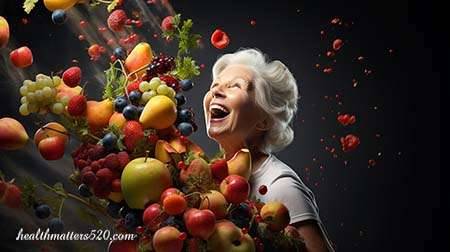
Antioxidants are substances that can prevent or slow damage to cells caused by free radicals, which are unstable molecules produced by the body as a reaction to environmental and other pressures. Antioxidants work by neutralizing free radicals, which can cause oxidative stress and damage to cells. This damage can contribute to aging and the development of diseases such as cancer, heart disease, and Alzheimer’s disease. By consuming foods rich in antioxidants, you can help protect your cells from damage and slow down the aging process.
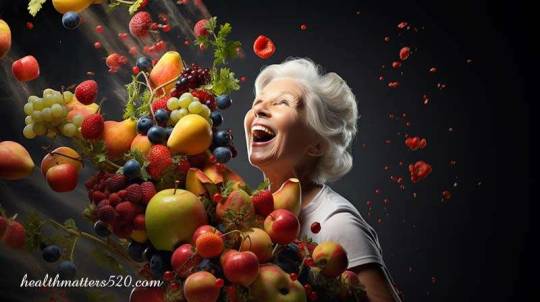
The Science of Aging
Aging is a natural process that occurs in all living organisms. It is characterized by a gradual decline in biological functions and the ability to adapt to metabolic stress 1. The causes of aging are complex and multi-factorial, but they can be broadly categorized into two types: intrinsic and extrinsic factors. Intrinsic factors are related to the genetic and biological makeup of an organism, while extrinsic factors are related to environmental and lifestyle factors such as diet, exercise, and exposure to toxins 2. The Role of Oxidative Stress in Aging Oxidative stress is one of the intrinsic factors that contribute to aging. It occurs when there is an imbalance between the production of reactive oxygen species (ROS) and the body’s ability to detoxify them. ROS are highly reactive molecules that can damage cellular components such as DNA, proteins, and lipids, leading to cellular dysfunction and death 3. Over time, this damage can accumulate and contribute to the aging process. In summary, aging is a complex process that is influenced by both intrinsic and extrinsic factors. Oxidative stress is one of the intrinsic factors that contribute to aging by damaging cellular components. By understanding the causes of aging, we can take steps to slow down the aging process and improve our overall health and well-being.
Antioxidants and Aging
Antioxidants can help slow down the aging process by neutralizing free radicals, which are unstable molecules that can damage cells and contribute to aging. By reducing oxidative stress and inflammation, antioxidants can help protect cells from damage and improve overall health. Different types of antioxidants and their benefits There are many different types of antioxidants, including vitamins A, C, and E, beta-carotene, selenium, and flavonoids. Each type of antioxidant has unique benefits. For example, vitamin C can help boost the immune system and protect against infections, while vitamin E can help protect against heart disease and cancer. Flavonoids, which are found in many fruits and vegetables, can help reduce inflammation and improve heart health. Incorporating foods rich in antioxidants into your diet can help slow down the aging process and improve overall health. Some of the best food sources of antioxidants include berries, dark chocolate, nuts, green tea, and leafy green vegetables. By consuming these foods regularly, you can help protect your cells from damage and improve your overall health and well-being.
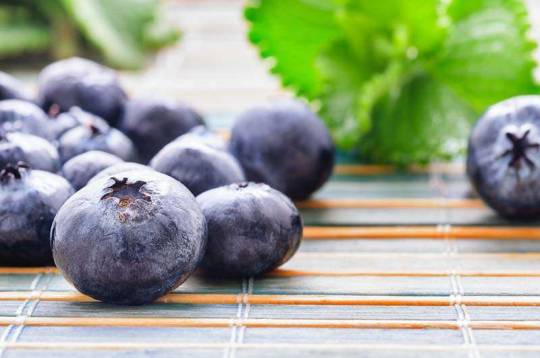
Scientific Studies on Antioxidants and Aging
There have been many scientific studies on the topic of antioxidants and aging. Here are some of the most notable studies and their findings: - Nutritional Significance and Antioxidant-Mediated Antiaging Effects of Finger Millet: Molecular Insights and Prospects4: This study found that finger millet, a type of millet, contains high levels of antioxidants and other compounds that can help protect cells from damage and slow down the aging process. The study also identified several mechanisms through which finger millet can help suppress aging processes and aging-related diseases. - Food Antioxidants and Aging: Theory, Current Evidence and Perspectives5: This review article provides a comprehensive overview of the current evidence on the relationship between food antioxidants and aging. The article discusses the potential benefits of antioxidants in reducing oxidative stress and inflammation, which can contribute to aging and age-related diseases. - Antioxidants in Age-Related Diseases and Anti-Aging Therapy6: This special issue of the journal Antioxidants focuses on the roles of antioxidant molecules in preventing age-related diseases and delaying aging. The articles in this issue provide insights into the mechanisms of action of antioxidants and their potential therapeutic applications in age-related diseases. - Antioxidants and Prooxidants: Effects on Health and Aging 20217: This special issue of the journal Oxidative Medicine and Cellular Longevity discusses the effects of antioxidants and prooxidants on health and aging. The articles in this issue provide insights into the mechanisms of action of antioxidants and prooxidants and their effects on cellular signaling pathways, gene expression, and other biological processes. The scientific studies on antioxidants and aging provide valuable insights into the mechanisms of aging and the potential benefits of antioxidants in slowing down the aging process. These studies have identified several natural compounds, including finger millet, that have anti-aging potential and can help protect cells from damage caused by oxidative stress and inflammation. By incorporating foods rich in antioxidants into your diet, you can help slow down the aging process and improve your overall health and well-being. In addition, these studies have identified several mechanisms through which antioxidants can help suppress aging processes and aging-related diseases. By understanding these mechanisms, we can take steps to slow down the aging process and improve our overall health. However, it is important to note that more research is needed to fully understand the effects of antioxidants on aging and age-related diseases. Overall, the scientific studies on antioxidants and aging provide hope for a healthier and longer life. By incorporating foods rich in antioxidants into your diet and taking other steps to reduce oxidative stress and inflammation, you can help protect your cells from damage and improve your overall health and well-being.
Foods Rich in Antioxidants
There are many foods that are rich in antioxidants and can help protect your cells from damage. Here are some of the best food sources of antioxidants: - Berries: Berries such as blueberries, raspberries, and strawberries are excellent sources of antioxidants. They are also low in calories and high in fiber, making them a great addition to any diet. - Dark chocolate: Dark chocolate is rich in antioxidants and has been linked to a variety of health benefits, including improved heart health and reduced inflammation. - Nuts: Nuts such as almonds, walnuts, and pecans are rich in antioxidants and healthy fats. They are also a good source of protein and fiber. - Green tea: Green tea is a great source of antioxidants called catechins, which have been shown to reduce inflammation and improve heart health. - Leafy green vegetables: Leafy green vegetables such as spinach, kale, and collard greens are rich in antioxidants and other important nutrients. They are also low in calories and high in fiber.
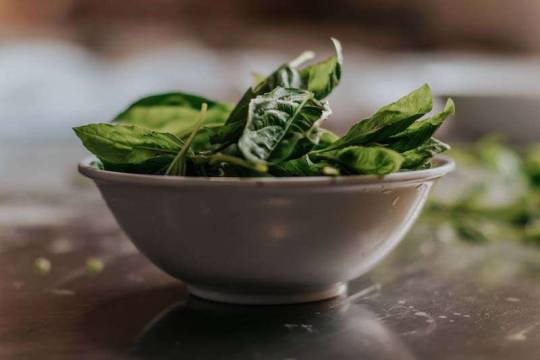
To incorporate these foods into your diet, try adding berries to your breakfast cereal or oatmeal, snacking on a handful of nuts, drinking green tea, and adding leafy greens to your salads and smoothies. By incorporating these foods into your diet, you can help protect your cells from damage and improve your overall health and well-being.
Conclusion
Antioxidants are substances that can help protect your cells from damage caused by free radicals and oxidative stress. By incorporating foods rich in antioxidants into your diet, you can help slow down the aging process and improve your overall health and well-being. Some of the best food sources of antioxidants include berries, dark chocolate, nuts, green tea, and leafy green vegetables. By adding these foods to your diet, you can help protect your cells from damage and improve your overall health. Remember to always consult with your doctor or a registered dietitian before making any significant changes to your diet. Thank you for reading! References Britannica : Aging - Life Process National Institute of Aging : Understanding the Dynamics of the Aging Process University of Minnesota : Gerontology and the Concept of Aging Anil Kumar et al. (2021). Nutritional Significance and Antioxidant-Mediated Antiaging Effects of Finger Millet: Molecular Insights and Prospects, Frontiers in Sustainable Food Systems Taiki Miyazawa et al. (2022). Food Antioxidants and Aging: Theory, Current Evidence and Perspectives, Nutraceuticals (2022). Special Issue "Antioxidants in Age-Related Diseases and Anti-Aging Strategies", Antioxidants (2021). Antioxidants and Prooxidants: Effects on Health and Aging 2021, Hindawi Read the full article
#aging#anti-aging#antioxidants#flavonoid#foodsrichinantioxidants#oxidativestress#reactiveoxygenspecies
1 note
·
View note
Text
@richardxoliverxmayhew
continued x

❝—Of course they are. I claimed them ten years ago and have retained the rights ever since. Do you not know the rules of this country?❞
#richardxoliverxmayhew#[ you thought vic might get less arrogant and shameless with age? think again ]#[ he owns richard's body the way he owns his lands ajgkdlh ((which is to say with a great amount of gentility)) ]#V; Entreprise
1 note
·
View note
Photo
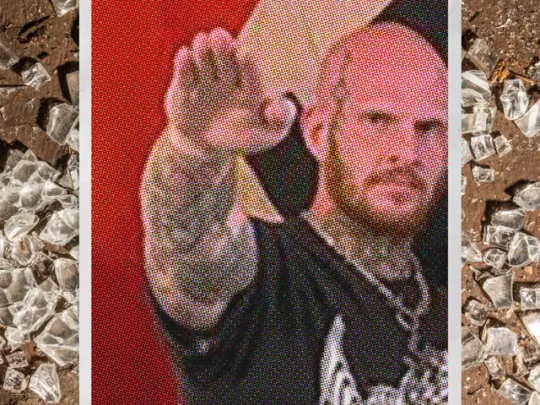
How Concerned Citizens Drove a Neo-Nazi Out of Rural Maine
Christopher Pohlhaus planned to build a fascist training compound in the woods of rural Maine. The local journalists, veterans, lumberjacks, and policymakers weren't having it.
Pohlhaus, 37, is a former U.S. marine, an itinerant tattoo artist, and a hardcore white-supremacist influencer. He is loud and hostile, and proud to be both. His voice is pitched surprisingly high, and he has a slight Southern drawl. He has a large body and small bald head; a blue-black tattoo crawls up the right side of his face, from his chin to his forehead. Over the years, Pohlhaus has collected thousands of social media followers, who know him by his nickname: Hammer.
Hammer had been living in Texas for a few years when, in March 2022, he bought the land in Maine. He told his followers that he was going to use it to build a haven, operational center, and training ground for white supremacists.
Check out our excerpt of The Atavist’s latest blockbuster story.
1K notes
·
View notes
Text
╔═══*.·:·.☽✧ ✦ ✧☾.·:·.*═══╗
About the Mun
╚═══*.·:·.☽✧ ✦ ✧☾.·:·.*═══╝
|| Raven || 18+ || 10+ years rp experience || they/them || semi-selective || OC friendly || multiship || multiverse ||

Full About Rules
╔═══*.·:·.☽✧ ✦ ✧☾.·:·.*═══╗
The Muse
╚═══*.·:·.☽✧ ✦ ✧☾.·:·.*═══╝
FULL NAME: Inquisitor Miriel Lavellan AGE: 22 (DAI) // 24 (Tresspasser) BIRTHDAY: 9:19 Dragon GENDER: Cisgender Female SPECIES: Elf ETHNICITY: Dalish NATIONALITY: Marcher CLASS: Rogue Artificer CANON ROMANCE: Solas
Full Details/Wiki

#indie roleplay#indie rp#dragon age inquisition#dragon age roleplay#dragon age rp#open rp#female lavellan#;about
0 notes
Photo

PORTO ROCHA
847 notes
·
View notes
Photo

🧀🥪🌶️🥭 The Ravening War portraits 🧀🥪🌶️🥭
patreon * twitch * shop
[ID: a series of digitally illustrated portraits showing - top left to bottom right - Bishop Raphaniel Charlock (an old radish man with a big red head and large white eyebrows & a scraggly beard. he wears green and gold robes with symbols of the bulb and he smirks at the viewer) Karna Solara (a skinny young chili pepper woman with wavy green hair, freckled light green skin with red blooms on her cheeks. she wears a chili pepper hood lined with small pepper seeds and stares cagily ahead) Thane Delissandro Katzon (a muscular young beef man with bright pinkish skin with small skin variations to resemble pastrami and dark burgundy hair. he wears a bread headress with a swirl of rye covering his ears and he looks ahead, optimistic and determined) Queen Amangeaux Epicée du Peche (a bright mango woman with orange skin, big red hair adorned with a green laurel, and sparkling green/gold makeup. she wears large gold hoop earrings and a high leafy collar) and Colin Provolone (a scraggly cheese man with waxy yellow skin and dark slicked back hair and patchy dark facial hair. he wears a muted, ratty blue bandana around his neck and raises a scarred brow at the viewer with a smirk) End ID.)
#trw#the ravening war#dimension 20#acoc#trw fanart#ttrpg#dnd#bishop raphaniel charlock#karna solara#thane delissandro katzon#queen amangeaux epicee du peche#colin provolone
2K notes
·
View notes
Text
Taking A Close Look At The Science Behind Infrared Saunas - Technology Org
New Post has been published on https://thedigitalinsider.com/taking-a-close-look-at-the-science-behind-infrared-saunas-technology-org/
Taking A Close Look At The Science Behind Infrared Saunas - Technology Org
Infrared saunas have become increasingly popular in Australia in recent years. But what exactly are they, and what are the scientific explanations behind their touted health benefits? Let’s take a close look at the science behind infrared saunas.
How Infrared Saunas Work
Unlike traditional saunas which use heat to warm the air, infrared saunas use light waves to directly heat your body. The saunas contain infrared heaters that emit infrared radiation. Infrared rays have longer wavelengths than visible light, meaning they penetrate deeper into the skin.
When absorbed by the body, the infrared rays warm up your body directly rather than just heating the air around you. This allows infrared saunas to operate at lower temperatures (typically 50-60°C) compared to regular saunas (usually around 80-100°C). The lower operating temperature makes infrared saunas more comfortable to sit in for longer periods.
Infrared wavelengths are divided into three categories:
Near infrared – Near infrared wavelengths range from 700nm to 1400nm. Near infrared radiation has the lowest energy and penetrates the least deeply into the skin, only about 3-4mm. However, it does penetrate deeper than visible light. Near infrared wavelengths interact with chromophores in the skin, particularly melanin. This means near infrared can help increase skin pigmentation and reduce the appearance of sun spots and scars.
Mid infrared – Mid infrared wavelengths range from 1400nm to 3000nm. Mid infrared penetrates deeper into the skin, around 5-6mm. At these depths, mid infrared rays interact with water molecules in the skin. This can help stimulate collagen production and cell renewal. Mid infrared also interacts with blood vessels just under the skin, causing localized dilation to increase blood flow.
Far infrared – Far infrared wavelengths range from 3000nm to 10000nm. Of the three categories, far infrared penetrates by far the deepest – up to 2 inches into the skin. At these depths, far infrared radiation interacts with blood vessels, muscles, ligaments and other subcutaneous tissues. This leads to the dilation of blood vessels and increased blood flow, similar to exercise. Far infrared also interacts with water molecules deep in the skin, producing a thermal effect that leads to profuse sweating.
Infrared saunas in Melbourne mainly use far infrared wavelengths, which have the deepest tissue penetration. The far infrared waves are absorbed by the skin and produce numerous therapeutic effects.
Increased Blood Flow
Multiple studies have shown that infrared sauna use causes an increase in blood flow similar to moderate exercise. When your body is exposed to infrared heat, your blood vessels expand and dilate to increase blood flow, which improves circulation and provides muscles and organs with more oxygen and nutrients. The enhanced blood flow during the sauna session also helps remove metabolic waste products.
Lower Blood Pressure
Multiple studies have shown that infrared sauna therapy can help lower blood pressure in those with hypertension. The infrared heat causes blood vessels to expand and increase blood flow. This increased blood flow leads to an immediate reduction in blood pressure that can last for up to an hour after you finish your sauna session. With regular use over time, the sauna can help lower baseline blood pressure values.
Relaxation
The soothing infrared heat helps relax the body and relieve tension in the muscles. Infrared rays are also thought to have a calming effect on the mind. Many people report emerging from an infrared sauna feeling rejuvenated and relaxed. This relaxation response can be very beneficial for both the body and mind.
Improved Skin Health
The deep heating effects of infrared rays have been shown to encourage the production of collagen in the skin. Collagen helps reduce the signs of aging. Regular use of an infrared sauna can help improve the appearance of the skin, reducing fine lines and wrinkles. The saunas may also improve inflammatory skin conditions like acne and eczema.
Pain Relief
Infrared saunas can provide natural pain relief in several ways. Firstly, the heat relaxes muscles and relieves muscle aches and pains. Secondly, the dilation of blood vessels increases circulation which speeds up the body’s natural healing processes and delivery of pain-relieving endorphins. Lastly, the endorphins released act as natural painkillers. People with chronic pain conditions like fibromyalgia and arthritis often report reduced pain levels after using infrared saunas regularly.
Weight Loss
Due to the intense sweating experienced in infrared saunas, they have been marketed for weight loss purposes. However, researchers have found that the elevation in heart rate during infrared sauna use only represents a moderate level of exertion. This means that while there is a temporary increase in metabolic rate, the overall number of calories burned is fairly low. Regular infrared sauna sessions may contribute slightly to weight loss but are not a replacement for regular exercise and a healthy diet.
Overall, when used safely and correctly, infrared saunas can provide some great therapeutic health benefits. But as with any new health therapy, make sure to do your own research and consult your GP if you have any concerns.
You can offer your link to a page which is relevant to the topic of this post.
#acne#aging#air#arthritis#Australia#blood#blood pressure#blood vessels#cell#chronic pain#diet#eczema#effects#energy#Exercise#Experienced#healing#Health#Health & medicine news#heart#Heat#heating#how#hypertension#infrared radiation#it#ligaments#Light#Link#melanin
0 notes
Text
Unlocking the Benefits of Fruit Enzymes in Skincare

The glow of beautiful skin - it is often the marker of good health and a part of what makes us feel our best. But, what if there was a way to tap into those benefits and harness the power of nature to uncover the secrets to gorgeous skin? With the potential of unlocking the benefits of fruit enzymes in skincare, that possibility may be a reality.
Table of Contents
- 1. The Skin-Freshening Benefits of Fruit Enzymes - 2. Unlocking the Power of Fruit Enzymes in Skincare - 3. Achieve Radiant Skin with the Power of Fruit Enzymes - 4. Unlock the Natural Glow: Fruit Enzymes in Skincare - Q&A
1. The Skin-Freshening Benefits of Fruit Enzymes
Fruit enzymes are natures way of providing a natural skin-freshening combination. They help to exfoliate, brighten, and rejuvenate the skin by: - Exfoliating: Fruit enzymes work to remove dead skin cells that can accumulate over time, dulling the complexion and creating an uneven skin tone. - Brightening: Fruit enzymes help to even out skin tone and lighten dark spots, giving a natural luminescence to the skin. - Rejuvenating: Fruit enzymes help to reduce the appearance of wrinkles, giving skin a smoother, firmer look and feel. In addition to their skin-freshening benefits, fruit enzymes also work to hydrate the skin and combat signs of environmental damage. With regular use, fruit enzymes can help to restore the skin's natural glow and restore a youthful radiance to your complexion.
2. Unlocking the Power of Fruit Enzymes in Skincare
Fruit enzymes are natural catalysts used in skincare to enhance the efficacy of other ingredients, promote exfoliation and bring about a smoother complexion. Enzymes like trypsin and bromelain act as gentle chemical exfoliants that break down dead skin cells and help to unclog debris from pores. Used in combination with natural exfoliants like granules and acids, fruit enzymes can make exfoliation much more efficient. Fruit enzymes in skincare burst onto the beauty and wellness scene and you can now find them in a variety of products such as: - Cleansers: Fruit enzyme facewashes can instantly brighten and refresh the complexion. - Masks: Key components of masks, they are used to slough off dead skin cells and reduce texture. - Toners: Highly concentrated formulas containing fruit enzymes are often used to help minimize pores. - Serums: Other uses of fruit enzymes in serums include nourishing, softening and hydrating the skin. When used properly, fruit enzymes are safe and can be beneficial to all skin types, especially in boosting radiance and luminosity.
3. Achieve Radiant Skin with the Power of Fruit Enzymes
Fruit enzymes have been used for generations to help nourish and support gorgeous skin. Packed with powerful antioxidants, fruit enzymes can restore lost hydration and fight off wrinkles and blemishes. Ready to take your skincare routine to the next level? Here's how to get the most out of fruit enzymes: - Cleanse your Face: Start by cleansing your face with lukewarm water and a gentle cleanser. This will help open your pores, allowing the fruit enzymes to penetrate deeper. - Apply Fruit Enzymes: Using your fingertips, massage the fruit enzymes into your skin. Focus on the areas with dryness, wrinkles, or blemishes, and let the enzymes sit for at least 5 minutes. - Rinse with Warm Water: After 5 minutes, rinse your skin with lukewarm water. Pat dry and apply a moisturizer to lock in the enzymes. It's also important to incorporate other lifestyle changes for the best results. Start slowly with simple changes such as drinking more water, protecting your skin from the sun, and getting 8 hours of shut-eye. Get ready for bright, glowing skin in no time!
4. Unlock the Natural Glow: Fruit Enzymes in Skincare
Did you know that you don’t need to splurge on expensive skincare products for a glowing complexion? Adding fruits to your daily skincare routine can provide the same moisturizing and skin-boosting benefits. Since ancient times, fruits have been used in the beauty industry for their natural healing, nourishing and antioxidant benefits. Fruit enzymes are gaining ground as a powerful skincare ingredient due to its ability to refine and revitalise the skin. From reducing large pores and wrinkles to giving a radiant, healthy look, fruit enzymes help to: - Cleanse: Fruit enzymes help to clean and detoxify the skin naturally, removing dirt, oil and other debris. - Exfoliate: They gently remove the dead skin cells that dull the complexion, revealing smoother, softer skin. - Soothe: Fruit enzymes provide a gentle, yet potent healing effect, calming sensitive and irritated skin. Boosting your daily skincare routine with fruit enzymes could be the key to unlocking naturally glowing skin. Start including them in your daily regime to nourish and revitalize your skin the natural way!
Q&A
Q: What benefits can I expect to see from using skincare products with fruit enzymes? A: Using skincare products that contain fruit enzymes can reduce the appearance of dark spots and blemishes, reduce the appearance and depth of wrinkles and lines, and help to even out skin tone. You may also experience softer, smoother skin, as well as a brighter complexion. Q: What type of fruit enzymes are commonly used in skincare products? A: Many skincare brands use papaya, pineapple, and banana fruit enzymes in their products. Papain found in papaya offers exfoliating properties and can help to remove dead skin cells, while bromelain found in pineapple offers anti-inflammatory benefits. Banana enzymes help to soothe and hydrate the skin. Q: Are there any precautions I should take before using skincare products with fruit enzymes? A: Depending on your skin type, fruit enzymes may cause irritation or sensitivity. It’s recommended that you start off with a skin patch test first to make sure that the product is suitable for your skin. Additionally, using too much of these types of products over an extended period of time could lead to the skin becoming over-exfoliated or damaged. Incorporating natural fruit enzymes into a skincare regime can be the key to vibrant, glowing skin. With all of the added benefits delivered in a gentle, safe, and natural way, unlocking the power of fruit enzymes in skincare seems like a no-brainer. So, if you're looking to get glowing this summer, reach for the power of nature and let fruit enzymes unlock your beauty. Read the full article
0 notes
Photo

One of my favorites by Paul Lehr, used as a 1971 cover to "Earth Abides," by George R. Stewart. It's also in my upcoming art book!
1K notes
·
View notes
Quote
もともとは10年ほど前にTumblrにすごくハマっていて。いろんな人をフォローしたらかっこいい写真や色が洪水のように出てきて、もう自分で絵を描かなくて良いじゃん、ってなったんです。それで何年も画像を集めていって、そこで集まった色のイメージやモチーフ、レンズの距離感など画面構成を抽象化して、いまの感覚にアウトプットしています。画像の持つ情報量というものが作品の影響になっていますね。
映画『きみの色』山田尚子監督×はくいきしろい対談。嫉妬し合うふたりが語る、色と光の表現|Tokyo Art Beat
146 notes
·
View notes
Photo










#thistension
XO, KITTY — 1.09 “SNAFU”
#xokittyedit#tatbilbedit#kdramaedit#netflixedit#wlwedit#xokittydaily#asiancentral#cinemapix#cinematv#filmtvcentral#pocfiction#smallscreensource#teendramaedit#wlwgif#kitty song covey#yuri han#xo kitty#anna cathcart#gia kim#~#inspiration: romantic.#dynamic: ff.
1K notes
·
View notes

